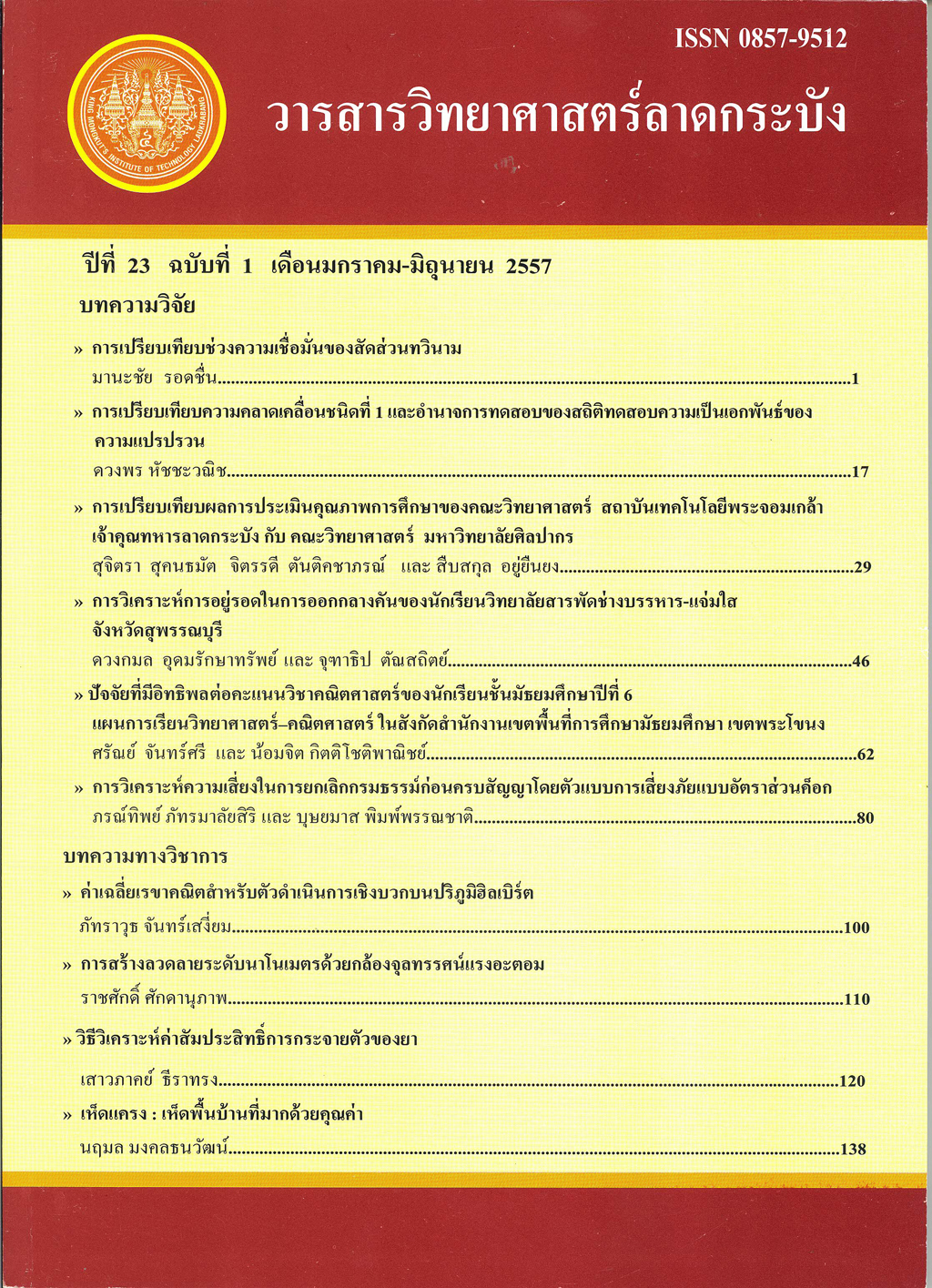การสร้างลวดลายระดับนาโนเมตรด้วยกล้องจุลทรรศน์แรงอะตอม
Main Article Content
Abstract
บทคัดย่อ
บทความวิชาการนี้เกี่ยวข้องกับกระบวนการใหม่ในการสร้างสิ่งประดิษฐ์ระดับนาโนเมตร จากกล้องจุลทรรศน์แรงอะตอม (AFM นาโนลิโทกราฟี) ซึ่งเป็นวิธีการที่โดดเด่นสำหรับการสร้างโครงสร้างและลวดลายในระดับนาโนเมตรได้อย่างถูกต้องแม่นยำ สามารถทำซํ้าได้อย่างมีประสิทธิภาพและไม่จำเป็นต้องทำในระบบสุญญากาศ โดยสามารถแบ่งออกได้เป็นสองกลุ่มตามหลักการทำงานได้แก่ (1) Force-assisted AFM นาโนลิโทกราฟี ประกอบไปด้วย mechanical indentation และ plowing, thermo mechanical writing, และ dip-pen nanolithography ใช้การให้แรงค่าสูงเข้าไปที่ปลายวัดเพื่อสร้างลวดลายบนพื้นผิวที่ต้องการ โดยปฏิกิริยาส่วนใหญ่ระหว่างปลายวัดและพื้นผิวจะเป็นแบบเชิงกล และ (2) Bias-assisted AFM นาโนลิโทกราฟี ใช้การจ่ายความต่างศักย์ไฟฟ้าระหว่างปลายวัดและแผ่นรองรับ ภายใต้สนามไฟฟ้าที่สูงมากจึงทำให้เกิดกระบวนการเปลี่ยนแปลงเชิงกายภาพและกระบวนการทางไฟฟ้าเคมี นำไปสู่การเกิดโครงสร้างในระดับนาโนเมตรผ่านทางปฏิกิริยานาโนออกซิเดชัน บทความนี้ได้อธิบายในรายละเอียดของหลักการทำงานของแต่ละวิธี และการนำไปประยุกต์ใช้ด้านการวิจัยเพื่อเป็นประโยชน์ให้กับผู้สนใจและนักวิจัยเพื่อใช้เป็นแนวทางในการเลือกใช้งานต่อไป
คำสำคัญ : กล้องจุลทรรศน์แรงอะตอม, นาโนลิโทกราฟี, สิ่งประดิษฐ์ระดับนาโนเมตร
Abstract
This review is related to a nano-fabrication process known as atomic force microscope nanolithography for the next generation of nanoelectronic devices. It has been shown to offer the advantages of high precision, good reliability, and non-vacuum process. The process can be classified into 2 methods. (1) Force-assisted AFM nanolithography includes mechanical indentation and plowing, thermo mechanical writing and dip-pen nanolithography. The large force is applied to the AFM tip to create the pattern on substrate surface. The main interaction between the tip and the substrates is mechanical. (2) Bias-assisted AFM nanolithography, a bias voltage is applied between the AFM tip and substrates. Under an extremely high electric field, the physical and electrochemical processes are initiated on the substrates and then create the anodic oxidation. The principles and applications of AFM nanolithography are reviewed.
Keywords: AFM, Nanolithography, Nanoelectronic devices

